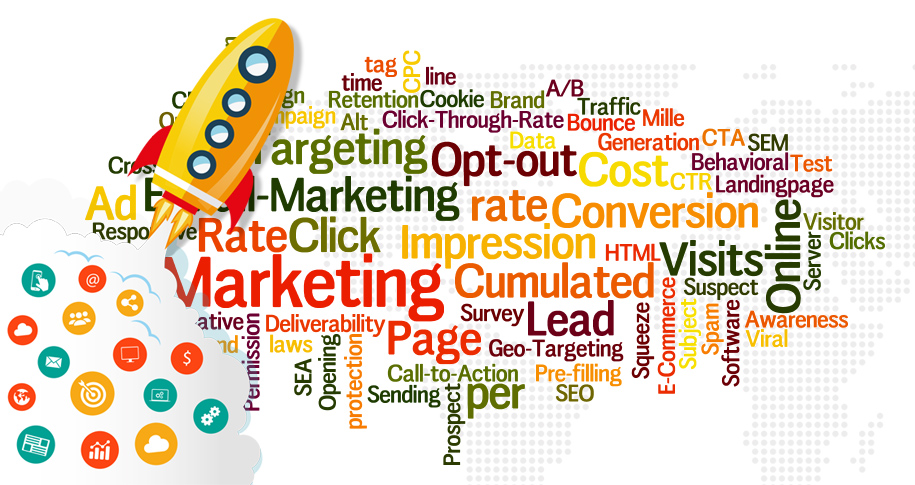What is RemarketingWhat is Remarketing?
Remarketing is a... More?
RemarketingWhat is Remarketing?
Remarketing is a... More is a digital marketingWhat Is Digital Marketing?
Digital ma... More strategy that targets users who have previously interacted with your website or mobile app but did not complete a desired action, such as making a purchase or filling out a form. By using cookies, marketers can display tailored ads to these users as they browse other websites or social mediaDefinition
Brand awareness is the ext... More platforms, reminding them of the brand and encouraging them to return and complete the action.
RemarketingWhat is Remarketing?
Remarketing is a... More is often referred to as “retargetingWhat is Retargeting?
Retargeting is a... More,” although they technically refer to slightly different strategies. RemarketingWhat is Remarketing?
Remarketing is a... More typically focuses on display ads that follow users across the web, while retargetingWhat is Retargeting?
Retargeting is a... More can also involve email campaigns to reach those same users.
Why is RemarketingWhat is Remarketing?
Remarketing is a... More Important?
- Higher Conversion Rates
- RemarketingWhat is Remarketing?
Remarketing is a... More can significantly increase conversion rates because you’re targeting individuals who have already shown interest in your product or service. These leads are warmer and more likely to convert compared to cold leads who’ve never interacted with your brand. - Example: A visitor who viewed your product page but left without buying is more likely to purchase if they are retargeted with an ad featuring the same product they viewed.
- RemarketingWhat is Remarketing?
- Cost-Effective AdvertisingDefinition
Brand awareness is the ext... More- Since you’re targeting an audience that has already interacted with your brand, remarketingWhat is Remarketing?
Remarketing is a... More campaigns tend to have a lower cost per acquisition (CPA) than other advertisingDefinition
Brand awareness is the ext... More methods. This is because the audience is more familiar with your brand and already has a degree of intent. - Example: RetargetingWhat is Retargeting?
Retargeting is a... More ads often result in higher click-through rates (CTR) and lower cost-per-click (CPC), which helps to maximize your advertisingDefinition
Brand awareness is the ext... More budget.
- Since you’re targeting an audience that has already interacted with your brand, remarketingWhat is Remarketing?
- Increased Brand Recall
- RemarketingWhat is Remarketing?
Remarketing is a... More helps keep your brand top-of-mind for users, even if they don’t immediately convert. By continuously showing ads to potential customers, you build brand recognition and trust, increasing the likelihood that they’ll return to complete a transaction. - Example: A user who sees an ad for your online store regularly is more likely to return when they’re ready to make a purchase.
- RemarketingWhat is Remarketing?
- Personalized Messaging
- RemarketingWhat is Remarketing?
Remarketing is a... More allows for personalized ad campaigns based on user behavior. You can show specific ads to users based on the products they viewed, pages they visited, or actions they took on your site. This level of personalizationWhat Is Personalization in Marketing?... More helps to create a more relevant and engaging experience for the customer. - Example: If a customer abandoned their shopping cart, you can target them with ads offering a discount on the products they left behind.
- RemarketingWhat is Remarketing?
How to Implement RemarketingWhat is Remarketing?
Remarketing is a... More
- Use of Cookies
- RemarketingWhat is Remarketing?
Remarketing is a... More relies on cookies to track visitors and their actions on your site. When someone visits your site and leaves without converting, the cookie will track them, allowing you to show them ads as they browse other websites or use social mediaDefinition
Brand awareness is the ext... More platforms. - Example: A user visits your e-commerce site and views a pair of shoes but leaves without buying them. Later, they see an ad for the same shoes as they browse another site.
- RemarketingWhat is Remarketing?
- Create Custom Audiences
- Segment your audience based on their behavior on your website. For example, create different remarketingWhat is Remarketing?
Remarketing is a... More lists for users who abandoned their cart, users who visited specific product pages, or those who have already made a purchase but haven’t returned in a while. - Example: You could target users who added items to their shopping cart but didn’t complete the purchase, showing them ads that remind them of the products left behind.
- Segment your audience based on their behavior on your website. For example, create different remarketingWhat is Remarketing?
- Use Multiple Channels
- RemarketingWhat is Remarketing?
Remarketing is a... More can be implemented across various platforms, including Google AdsWhat Is Google Ads?
Google Ads (forme... More, Facebook, Instagram, and other display networks. Using multiple channels increases the chances of reaching your audience and improving engagement. - Example: A potential customer who was retargeted with an ad on Facebook might see another remarketingWhat is Remarketing?
Remarketing is a... More ad on Instagram or a related site they visit, creating multiple touchpoints.
- RemarketingWhat is Remarketing?
Conclusion
RemarketingWhat is Remarketing?
Remarketing is a... More is a powerful tool for converting users who have already shown interest in your brand but have not yet taken action. By displaying personalized ads across multiple platforms, you can bring these potential customers back to your website and encourage them to complete the desired action, increasing conversions and maximizing your advertisingDefinition
Brand awareness is the ext... More ROI.
